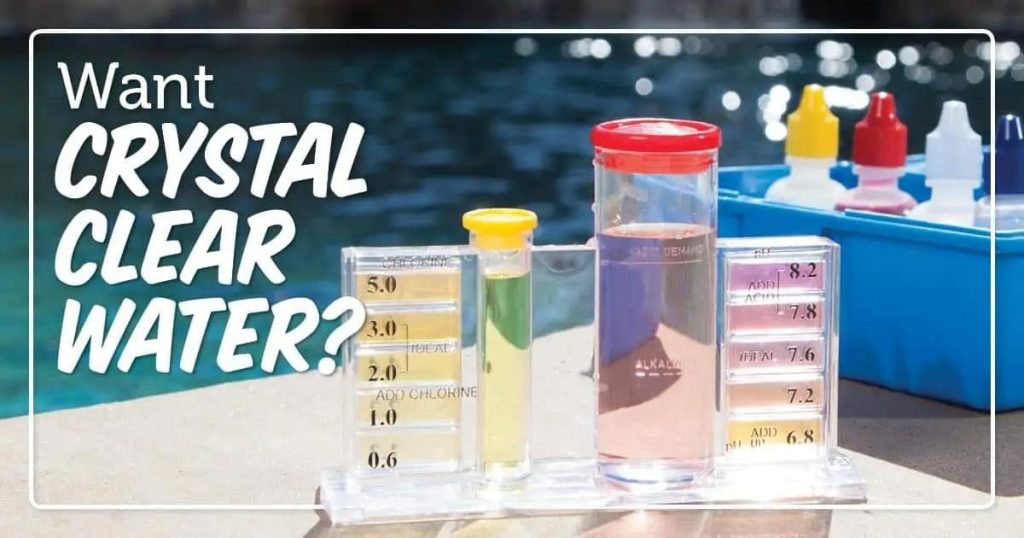Picture this: You’re all set for a refreshing dip in your pool, but instead of crystal-clear water, you’re faced with a ghastly green color. Yikes! Not only is it an eyesore, but it’s also a serious health hazard.
Don’t panic! Green pool water can be cleared up quickly with a little bit of effort and know-how. Lucky for you, I’ve got all the tips and tricks you need to get your pool back to its sparkling self in just a day or two. Don’t let a green pool ruin your summer fun – read on to learn how to clear it up fast!
Steps To Clean A Green Pool
The green color is a tell-tale sign of algae taking over your pool! And how does this pesky algae grow, you ask? Well, it’s usually due to a combination of neglecting proper maintenance and giving it too much exposure to the sun. Don’t worry; there is a pretty simple solution to the problem.
Notably, It won’t be an overnight fix, but if you follow my instructions carefully, you’ll be back to swimming in a sparkling pool in just 4-5 days. So, let’s get to work and get your pool looking its best!
Step 1. Scrub And Clean The Pool’s Walls And Floor
You should brush the walls and floor to get rid of algae and then vacuum the floor. For this, your telescopic pole should be equipped with a pool brush so that you can scrub the pool’s walls, floor, steps, and any other surfaces where algae may be adhering.
The intention is to have the algae float in your pool’s water so that chlorine has a better chance of killing it. Using an algae brush for this activity is preferable if your pool is made of concrete.
A heavy-duty brush works better than soft nylon bristles to remove algae since it is resilient and will tenaciously adhere to the pool’s surfaces.
Step 2. Determine The Level Of Alkalinity And Ph
Checking your water’s alkalinity and pH is the next step. The alkalinity of the water gauges its resistance to pH changes. Conversely, your pH levels measure how acidic the water is.
These chemicals work around the clock to keep your pool clear and suitable for swimming when perfectly balanced. Keep in mind that your pH levels should range from 7.2 to 7.8, and your alkalinity level should be between 80 and 120 PPM.

Since you will later shock the water to raise the pH, it is acceptable if it is slightly lower. The shock therapy will be as successful as feasible if your pH and alkalinity are adjusted.
Step 3. Use Chlorine Shock To Kill Algae In Your Pool
Killing the algae is the primary step in cleaning a green pool. A high chlorine concentration in pool shock will kill the algae and sanitize the pool. Use a calcium hypochlorite shock with at least 70% accessible chlorine for the most significant effects.
Your pool’s maintenance program should include Pool Shocking regularly. This method requires adding chemicals to the water to maintain balance and increase the amounts of free chlorine.
Step 4. Run The Pool Filter For Eight Hours and Shock Again If Necessary
You should operate your filter system for at least 8 hours overnight after you shock at night. Even better, keep your filter running continuously until your pool is clear. Your pool will clear quicker if you do this.
The routine maintenance of your pool should include shocking. This method requires adding chemicals to the water to maintain balance and increase the amounts of free chlorine.
It is necessary to administer a double or triple dose while battling a green algae problem. The increase in chemicals will kill algae and bacteria. When handling the chemicals, wear safety gear like gloves and goggles and carefully adhere to the instructions on the package.
Step 5. Additional Water Testing And Pool Chemical Adjustments
Test it once more when the water in your once-green pool turns clear or blue and loses its green color. This time, check your pH, alkalinity, calcium hardness, and chlorine levels. As necessary, add chemicals to restore equilibrium.
Once everything functions as it should, test it again, and then you can resume using your pool.
Frequently Asked Questions
What Are Some Of The Best Ways To Getting Rid Of Green Pool Water?
- Scrub the swimming pool’s walls and bottom with a pool brush before adding any chemicals.
- Test the water with a chemical test kit to check the pH and chlorine levels.
- Adjust the pool’s chemical by adding an acid or a base to get the level to just below 7.8.
- Verify the filter’s functionality by backwashing it as necessary and ensuring it functions correctly before adding chemicals to the pool.
Wrap Up:
In a nutshell, keeping the pool clean and clear is essential not only for enjoyment but also for healthier environments to swim. Green pool water can be a sign of poor maintenance, and It’s important to address the issue promptly to avoid further damage.
By following the steps outlined in the article, such as testing the water, adjusting the chemicals, and removing debris, you can quickly clear up your green pool water. Remember to regularly practice good pool maintenance habits to prevent future issues and reduce the need for harsh chemicals. For more information about pool maintenance, don’t forget to visit thepoolmania.com!
